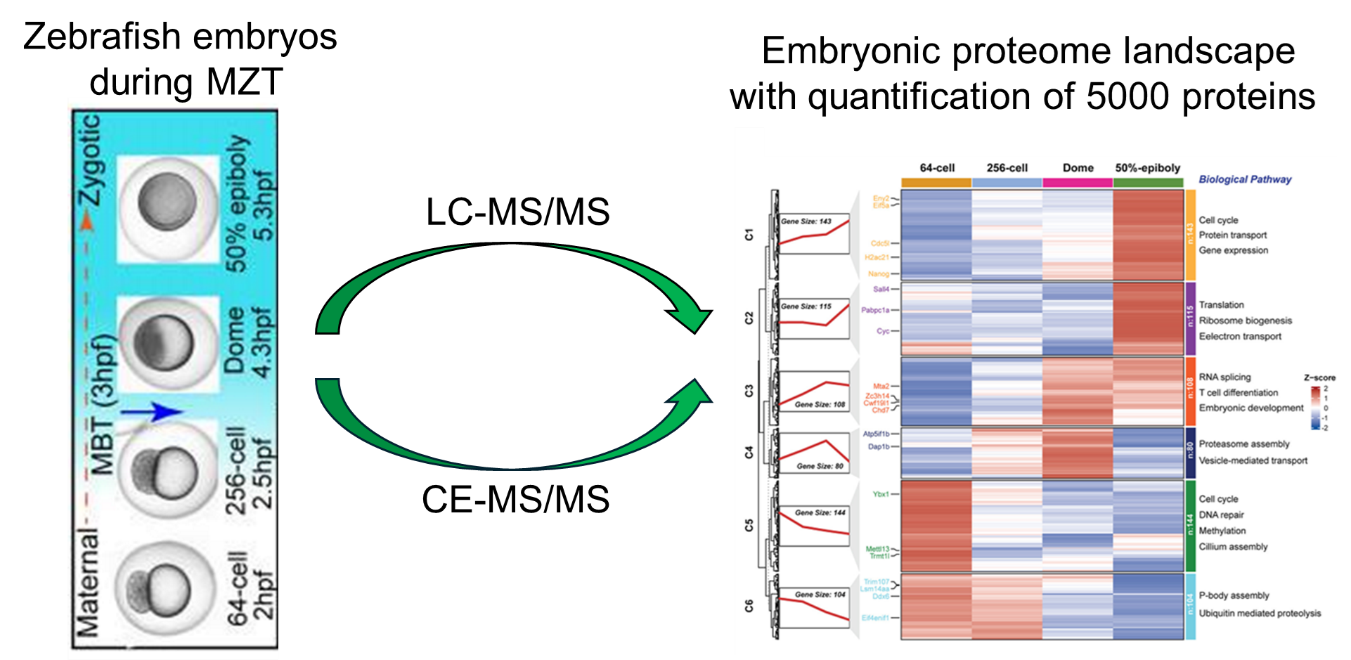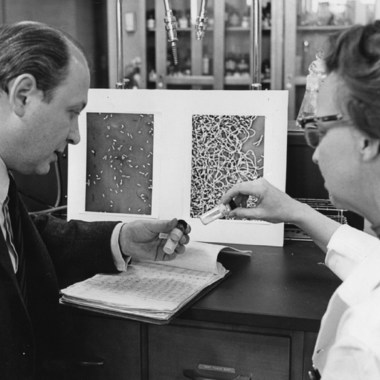Sun Group reports breakthrough systematic survey of zebrafish embryos

Maternal-to-zygotic transition (MZT), during which developmental control is handed from maternally provided gene products to those synthesized from the zygotic genome, is a critical step in the early development of all animal species. Due to the high genetic similarities between zebrafish and humans, zebrafish has become a widely used model organism for studying early vertebrate embryogenesis, including MZT.
Dr. Liangliang Sun’s group at MSU Chemistry recently reported in iScience (Fang et al. iScience 2024, 27, 109944) the expression dynamics of 5,000 proteins across multiple developmental stages of zebrafish embryos during MZT, representing the most systematic survey of proteome landscape of zebrafish MZT embryos. The protein expression profiles accurately reflect the main events that happen during the MZT. Significant discrepancies between zebrafish proteome and transcriptome profiles during the MZT were discovered. The proteome dynamics database will be a valuable resource for developmental biologists to better our understanding of the underlying molecular mechanisms of early vertebrate embryogenesis.

The study employed both liquid chromatography-tandem mass spectrometry (LC-MS/MS) and capillary electrophoresis-tandem mass spectrometry (CE-MS/MS) to reach a more comprehensive measurement of the zebrafish embryo proteome. The multi-dimensional separations play a central role in reducing the interference of high-abundant yolk proteins on the identification of low-abundance proteins, e.g., transcription factors.
To learn more about the Sun Group, please visit their research website.



